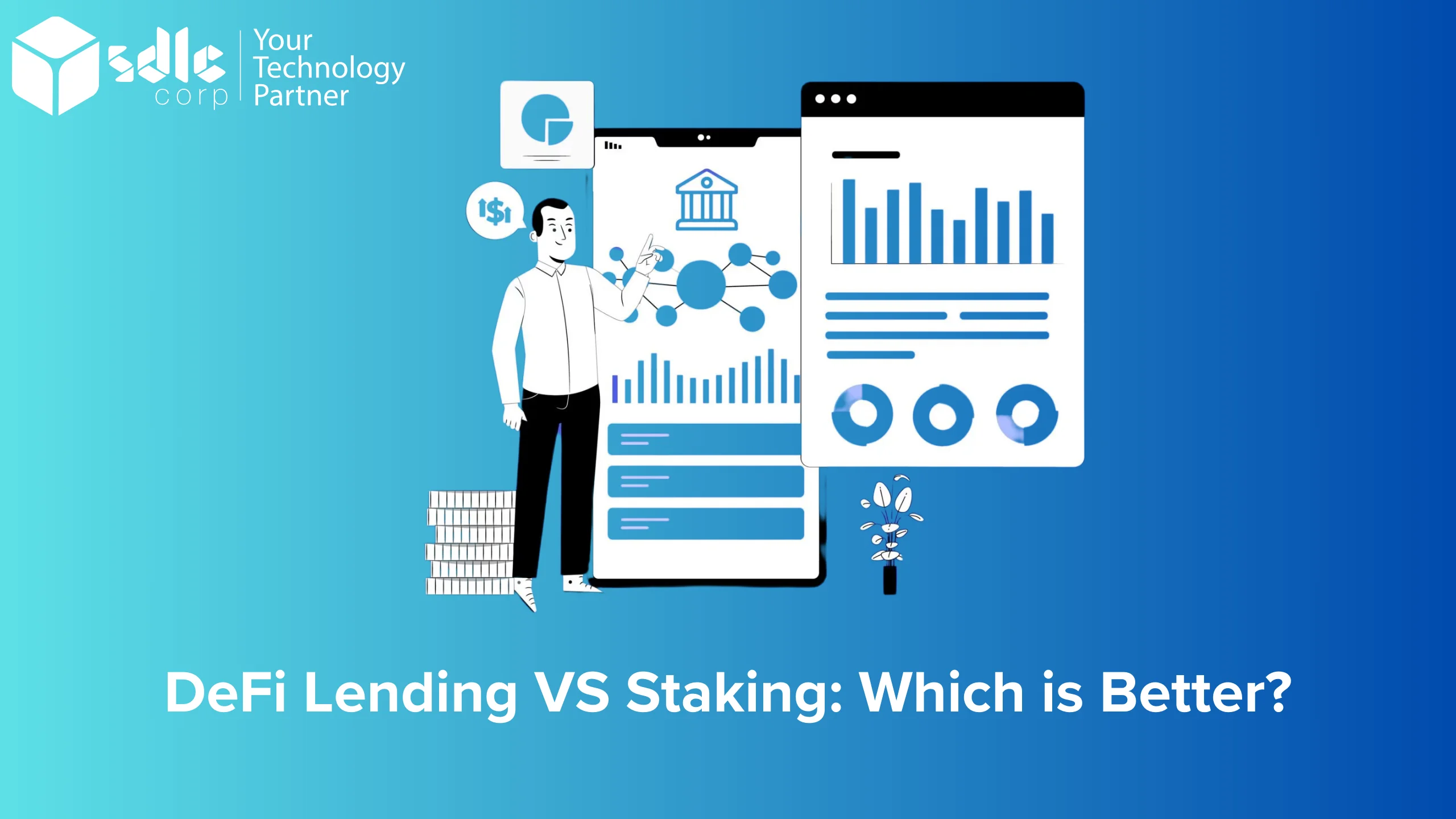Decentralized Finance (DeFi) is reshaping the way we earn passive income from cryptocurrencies. Whether you’re an investor looking for steady rewards or seeking higher yields, two popular methods stand out—DeFi Lending and Staking.
Both allow crypto holders to put their assets to work instead of letting them sit idle in wallets. But which one is better? DeFi lending offers flexibility and liquidity, while staking provides network security and predictable earnings.
In this guide, we’ll compare DeFi Lending vs. Staking, exploring their risks, rewards, and best use cases to help you make an informed decision.
1️⃣ Understanding DeFi Lending
🔹 What is DeFi Lending?
DeFi lending allows users to lend their crypto assets to borrowers in exchange for interest payments. Unlike traditional finance, no middlemen (banks) are involved—everything is managed via smart contracts on blockchain platforms like Aave, Compound, and MakerDAO.
🔹 How DeFi Lending Works
1️⃣ Lenders deposit their crypto into a liquidity pool.
2️⃣ Borrowers take loans by providing collateral (e.g., ETH, BTC, USDC).
3️⃣ Interest rates are determined by supply & demand.
4️⃣ Lenders earn interest on their deposits over time.
🔹 Benefits of DeFi Lending
✅ Passive Income – Earn interest without selling your crypto.
✅ No Lockup Period – Assets can be withdrawn anytime (depending on the protocol).
✅ Collateralized Loans – Borrowers must over-collateralize, reducing default risks.
✅ Supports Multiple Assets – Lend stablecoins, Ethereum, Bitcoin, and altcoins.
🔹 Risks of DeFi Lending
⚠ Smart Contract Risks – Bugs in smart contracts can lead to asset losses.
⚠ Liquidation Risk – If collateral value drops below the threshold, borrowers get liquidated.
⚠ Interest Rate Volatility – Earnings fluctuate based on market demand.
2️⃣ Understanding Crypto Staking
🔹 What is Staking?
Staking is the process of locking up your crypto assets in a Proof-of-Stake (PoS) blockchain to support network security and validate transactions. In return, you earn staking rewards (like interest) for your contribution.
Popular staking networks include Ethereum 2.0, Solana, Cardano, and Polkadot.
🔹 How Crypto Staking Works
1️⃣ Investors lock their tokens in a staking contract.
2️⃣ The network uses these tokens to validate blockchain transactions.
3️⃣ In return, stakers receive rewards (newly minted tokens + transaction fees).
4️⃣ Some networks have staking pools, allowing users to stake without running a validator node.
🔹 Benefits of Staking
✅ Earn Passive Income – Rewards are predictable and steady.
✅ Contribute to Network Security – Staking helps secure blockchains.
✅ Lower Risk Than Lending – No borrower default risks.
✅ Supports Long-Term Growth – Rewards compound over time.
🔹 Risks of Staking
⚠ Lockup Periods – Staked assets may be locked for weeks/months (varies by network).
⚠ Slashing Penalties – Validators behaving maliciously lose part of their stake.
⚠ Inflationary Rewards – Some PoS networks dilute rewards over time.
3️⃣ Key Differences: DeFi Lending vs. Staking
| Feature | DeFi Lending | Staking |
|---|---|---|
| Earnings Type | Interest from borrowers | Block rewards + transaction fees |
| Control Over Funds | Flexible withdrawals | Often requires lock-up |
| Security Risks | Smart contract vulnerabilities | Slashing risks for validators |
| Earning Consistency | Variable, depends on supply/demand | Predictable, based on network rewards |
| Best For | Investors who want liquidity & flexibility | Long-term holders who support blockchain security |
4️⃣ Which is Better: DeFi Lending or Staking?
The best choice depends on your investment goals and risk tolerance:
🟢 Choose DeFi Lending If:
✔ You need liquidity (withdraw funds anytime).
✔ You prefer diversification (lend stablecoins, ETH, BTC, etc.).
✔ You’re comfortable with interest rate fluctuations.
🔵 Choose Staking If:
✔ You’re a long-term investor (willing to lock funds).
✔ You want predictable and stable returns.
✔ You support PoS blockchain security.
5️⃣ Can You Do Both? (Hybrid Strategy)
Yes! Many investors combine both strategies to maximize returns:
✅ Stake a portion of long-term holdings (e.g., ETH, SOL, ADA) for steady rewards.
✅ Lend stablecoins (USDT, DAI, USDC) in DeFi protocols for flexible earnings.
✅ Reinvest staking rewards into DeFi lending to compound gains.
This balanced approach reduces risk while maintaining profitability and liquidity.
Conclusion
Both DeFi Lending and Staking offer excellent opportunities for passive income in the crypto space. While lending provides flexibility and higher yield potential, staking contributes to network security while ensuring stable rewards.
For risk-averse investors, staking is a safer option with predictable earnings. However, if you seek liquidity and diverse earning opportunities, DeFi lending might be the better choice.
As the DeFi ecosystem continues to grow, businesses looking to build secure and scalable financial solutions can benefit from Blockchain Development Services to create innovative lending and staking platforms.
Ultimately, a hybrid strategy that combines both can help investors maximize gains while effectively managing risks in the evolving DeFi landscape.
🚀 Which strategy suits you best? The answer depends on your goals, risk appetite, and time horizon.
Key Takeaways:
✅ DeFi Lending offers flexible, interest-based earnings but carries smart contract risks.
✅ Staking provides stable rewards but often requires lock-up periods.
✅ A hybrid approach using both can optimize passive income while managing liquidity and risk.
💡 Want to dive deeper into DeFi strategies? Stay ahead of the curve with expert insights and research on decentralized finance! 🚀















